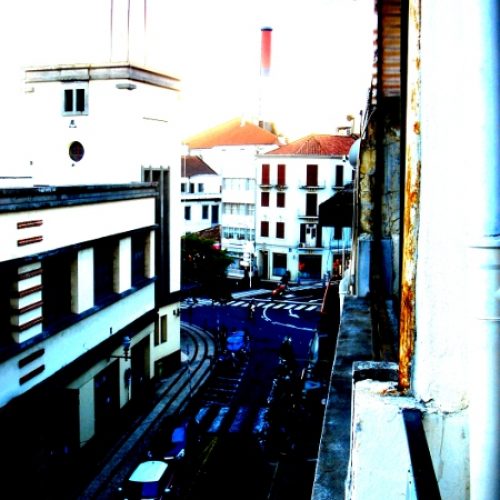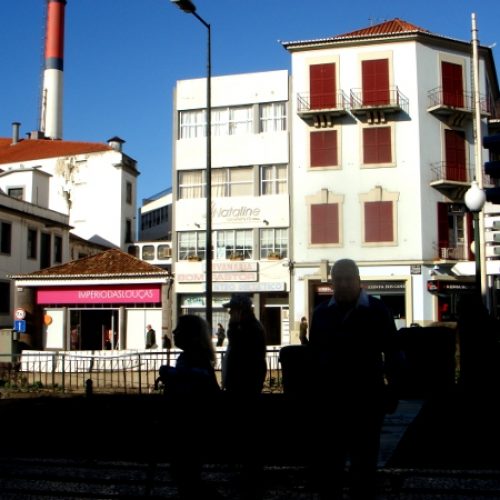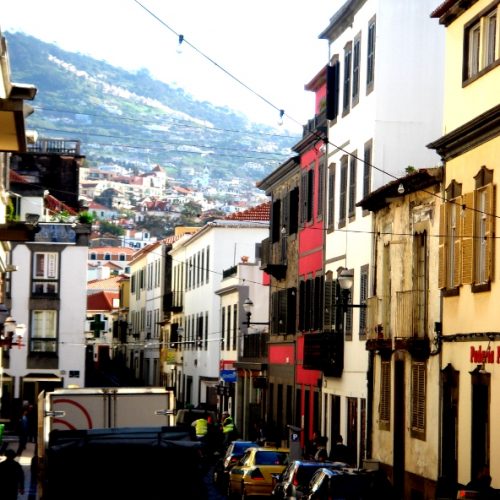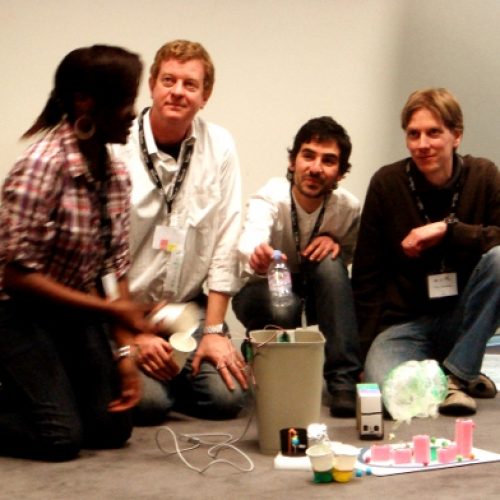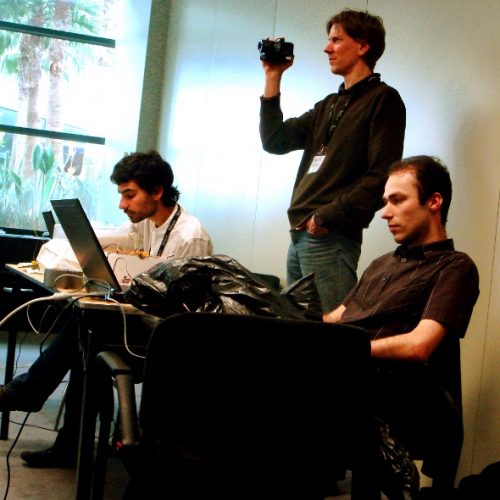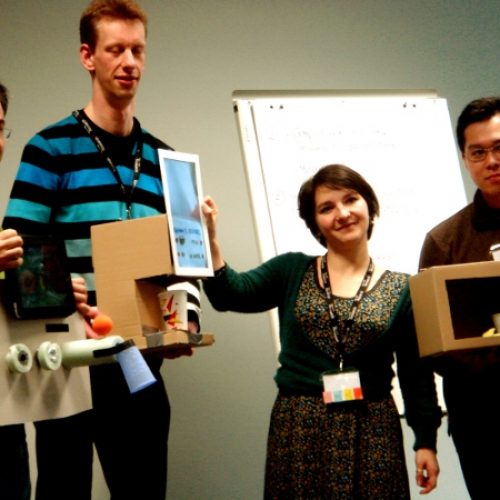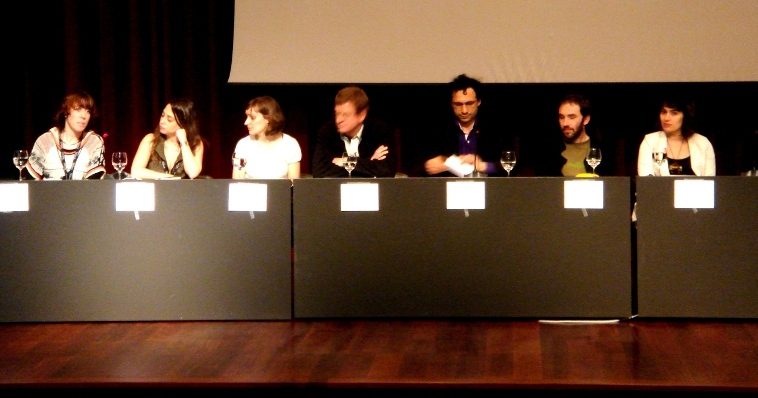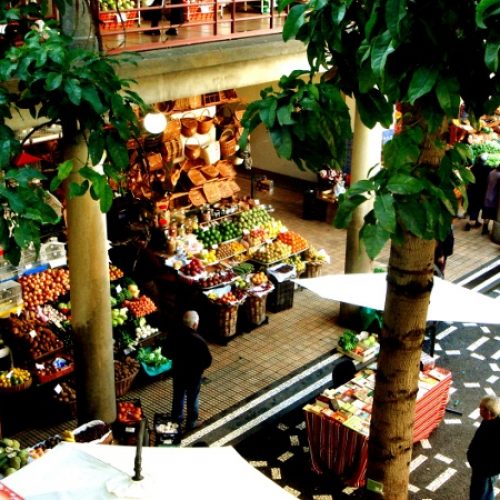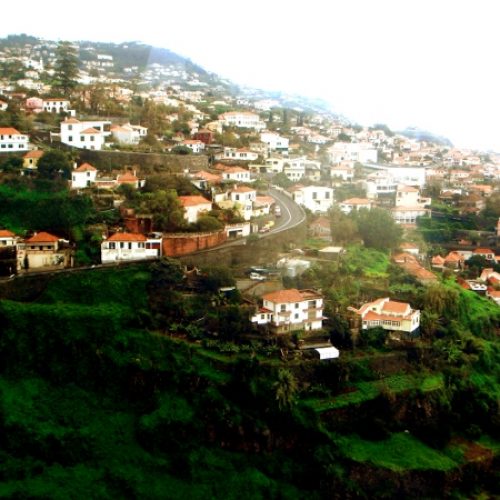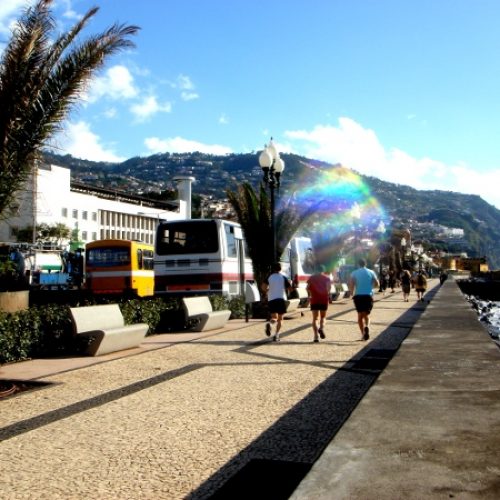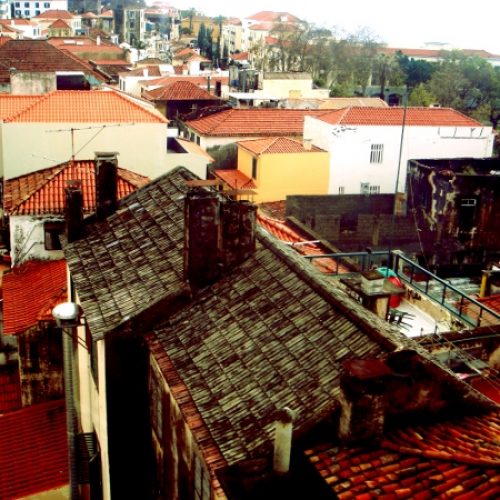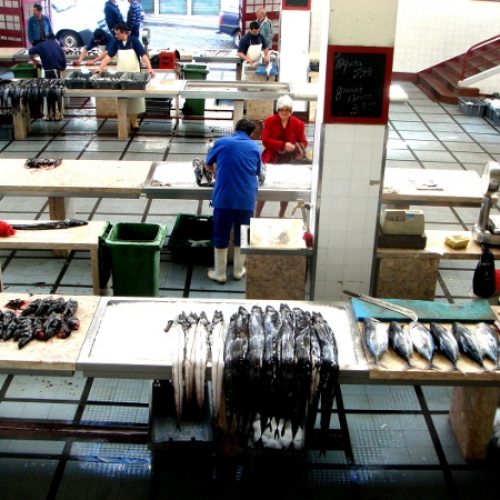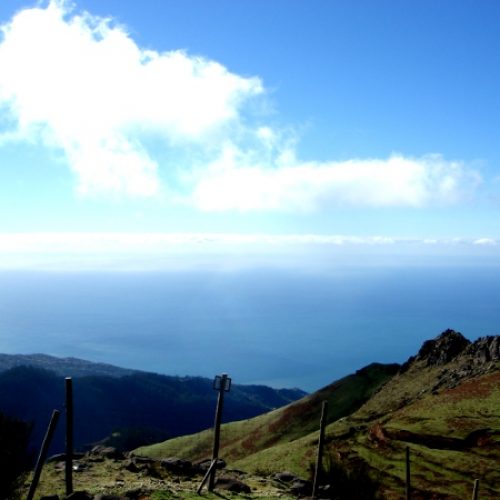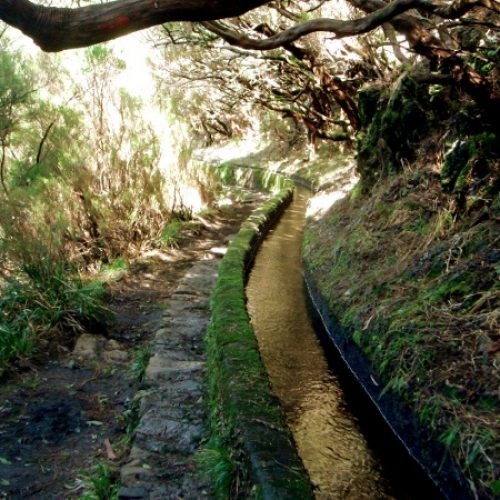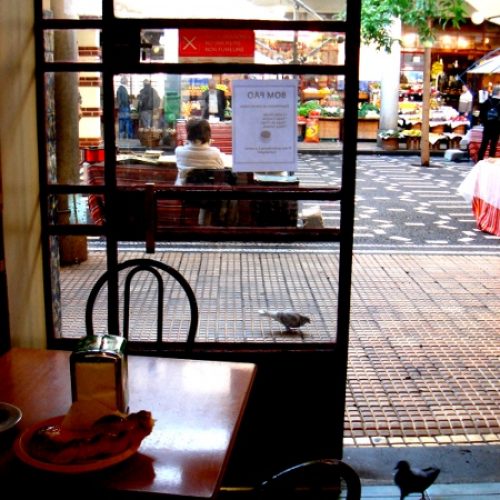0 – Arriving.
Arrived in Funchal/Portugal at Saturday evening, got a first nice view of the island with all its greening and the ocean. Did the Ice Breaking at a bar called No °2.
1 – Studios.
I am staying at a hostel in the city center and it took us a nice foot walk of over half an hour to get to the conference hotel. I enjoyed the atmosphere of the Sunday morning.
I participated in a studio called „Do-it-Yourself Creation of Pervasive, Tangible Applications“ addressing the ability of building hardware by yourself – and the awareness, that using hardware and software to create your own tangible smart objects does not need to be a nerdy freaky thing and you should not need to be an expert to repair products. If there is open source, there is a community – so let's work on open source engineering.
The group topics were theming different sizes of ecologic systems. We thought of possibilities of smart DIY systems providing ecologic or social enhancements. The solutions headed to systems benefiting citizens or neighbors acting green – with trophies or with green indicating bracelets you could also use for navigation (through vibrating left or right) or modular built indicating light in social ways you could create by yourself. We first built paper mockups and later prototyped the easiest parts with arduino boards and simple LEDs, touch and light and by the organizers self made sensors like accelerometers. They also built an easy plant water sensor – two nails stacked in the potting soil connecting an electronic cycle when the water amount is high enough.
The welcome drink in the evening was a great opportunity of getting inspired by a huge laser installation at a club entry in Portugal or about growing fridges if you fill them with unhealthy food.
Had my first heavy summer rain this year at January 24 ♥
2 – Keynote and talks.
The first official conference day started with the keynote from Gillian Crampton Smith was reviewing tanglible stuff of the last decades of years showing some delightful examples like the answering machine controlled with marbles by Durrell Bishop or OTTO by Luca de Rosso giving you the ability of feeling the sound of electronic tracks. Gillian Smith also mentioned advantages of physical interfaces such as being changeable, cheap and malleable. She showed further great projects like Strangely familiar and The age of fire, a short film about a fully automatic suite.
She as well as other participants addressed remote communication for example between couples in a long-distance relationship realizing personal communication interactions like writing on a steamed up mirror as well as in sand or lighting up candles.
Also worth thinking about: The talk “Responsible Storytelling” including a discussion about the truth of video documentations – should you fake it providing the viewer a look at the final product you are imaging or showing the prototype with all its errors to sensitize for the way your object is built and the work that goes into it?
It was the first time I heard about hydraulophones – liquid outstruments produced in Toronto, about squeaky pompoms and the declarative Multitouch framework called MIDAS. Also the real ink tracking System called iNkDraw was new to me and as the inventor told me, it is not difficult to build one by yourself.
WLAN is still not present. I wanted to upload this lines immediately, but it seems you have to read the reviewed and corrected version some days after I will arrive back at home, lucky you.
Another nice discussion we had at dinner about vandalism: It seems that semi private and public spaces in the public domain are connected to the behavior of people interacting with the space, like being respectful or feeling welcome. A human wants to leave traces while interacting with things. So clean walls are incompatible of showing the presence of a human being and thats why they want to force traces with color or cuts. So you either need to have a traceable basis or to turn a public space into a semi public/private place by adding your personal likings or surrounding.
3 – Demos.
Before we had the chance to present our work there were some talks for example about MathAngels, about a great Real-Robot-Virtual-Robot-Pong-Game facing kinetic and visual continuity and about personal objects telling a story if you touch them with the Reading Glove – like physical monkey island.
Related to my current job the Kung Fu Kitchen project with mini games particular designed for children with disabilities is also mentionable as well as the people from synlab who are using a puppet to control a virtual character for mental rotation tests – they think a simple virtual mirror interface coming with the Kinect or the Wii is not stimulating your brain thinking about movement as much as controls or vibrations would do. They also talked about a common coding theory effect, I have to wiki that again..
The Industry Roundtable in the afternoon turned out to be a table with all very nice people but real stereotypes. There was the pretty startup woman first taking the wrong path to finance business but after following her dream and heart everything went magical. The skinny guy raving about Microsoft being a great and innovative working place but in such an uncool way, in the opposite the iPad app designing Apple woman with the smooth voice and the perfect office opening at 10, serving beer, feeding dogs and, of course, hiring. The funny Japanese man who told us how he is trying to convince his boss to publish their theories (at least after they patented it so they can sue anyone using it) and the cute German working for everyone who is offering him bananas or ink to swim in..
Fun. No offense.
They gave us a name – Physical Interaction Designers.
Our attendance at the demo session showing the eXplore Table as an art exploration was great. (I have written before about this project.)
Thanks for the inspiring discussions and for everyone who visited us.
4 – Final conference day.
More talks and talks and talks. There is no way any further information can be stored in my brain. But I was positive surprised by a talk mentioning security issues. Larger screens, public places and collaborative systems are affecting the privacy of pins. The talk was about hidden password input via vibration and sound output and the only one I remember beside the talk about blinking silicon toys and the one addressing vibration creation with low frequency sound.
While having coffee we had a great idea: Building a voting device with a shredder unit under the scanner so the voting paper is (watchable for the voter) destroyed right after inserting it. We call it “The Chinese Voting Machine”.
5-6
I thank everyone I got to know during the conference. It was my pleasure.
Furthermore I thank the Gesellschaft von Freunden und Förderern der TU Dresden e. V. and the chair of media design TU Dresden for financial supporting and making my attendance at the TEI'11 possible.
